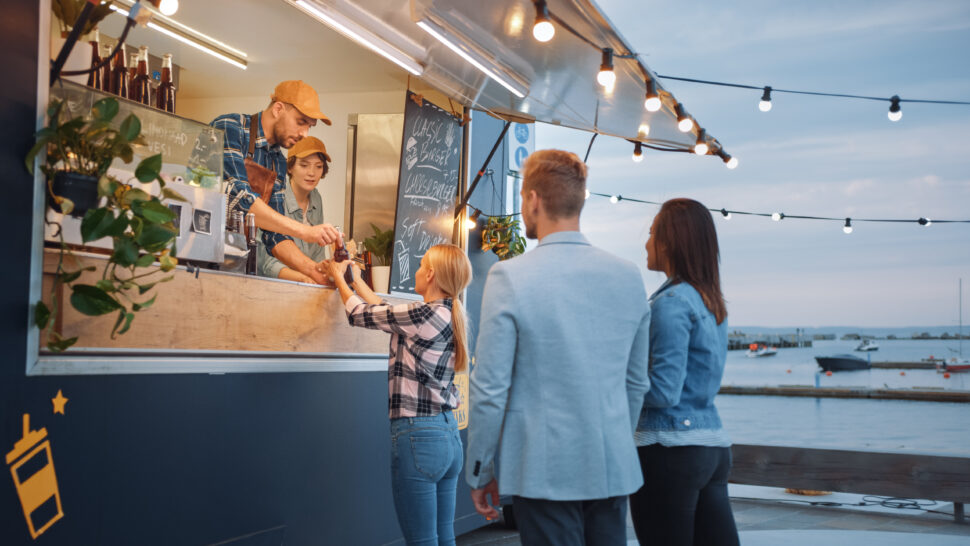- 1.What is a restaurant concept?
- 2.Best restaurant concepts to implement in 2024
- Pop-Up restaurants
- Fast-Casual restaurants
- Food Trucks
- Farm-to-table restaurants
- Fine dining restaurants
- Fine casual restaurants
- Eco-Friendly Restaurants
- High-tech restaurants
- 3.Factors to consider before adopting a new restaurant concept
- Target Audience
- Location
- Competition
- Budget
- Local Laws
- Hiring and training staff
- Branding and restaurant marketing strategy
- 4.Conclusion
When it comes to deciding what direction your business will take, choosing the best restaurant concept plays a pivotal role in shaping your customer’s dining experience. Whether you run an established restaurant and looking to rebrand or are a newbie looking to dip your toes in the treacherous waters of the food service industry, restaurant concepts cater to a wide array of tastes and preferences. This article highlights some of the best restaurant concepts that have captured the minds and palates of foodies.
What is a restaurant concept?
A restaurant concept is the overall idea and theme that defines the identity, atmosphere, and offerings of a food establishment. It represents a combination of components that defines a restaurant, including things like cuisine type, ambiance, service style, and overall experience. From casual to fine dining, and from fusion to traditional dishes, a restaurant concept serves as the vision that shapes every aspect of the culinary experience. Some of the best restaurant concepts lay the foundation for the items that are included in your menu, how your interior is designed, and what service style will be used. These all work in tandem to create a memorable experience for your customers.
Best restaurant concepts to implement in 2025.
Pop-Up restaurants
These are restaurants that appear for a brief period, usually in unusual places or with specific themes. They serve a wide variety of food, from lavish and expensive dishes to simple to-go meals. Pop-up restaurants are a great way for foodies to experience new things and for restaurant owners to try out new menu items before making a significant investment.
Fast-Casual restaurants
It is a fast-food and casual dining hybrid that provides speedy service and better-quality ingredients. They usually include healthier food options and offer customers the ability to build their own menus. Fast casual restaurants are becoming increasingly popular as food customers want convenience and speed and are less concerned with table service.
Food Trucks
Food trucks are mobile restaurants that are usually run out of trailers or customized vans. All the restaurant equipment required to prepare and store the food is included on the inside. The meals are prepared to order and served to go once the consumer places their order at a window. Food truck menus are limited in size but make up for it with creativity. Trucks usually focus on one or two specialties with unique flavor combinations.
Farm-to-table restaurants
These restaurants utilize fresh, locally sourced products that are obtained directly from nearby farmers. As the name implies, they literally get the food from the farm directly to the customer’s table. The farm-to-table restaurant concept promotes nutritious and healthy meals while supporting the local economy.
Fine dining restaurants
Fine dining restaurants provide the ultimate dining experience, they offer the best cuisine along with refined, elegant services. A fine dining establishment typically employs a larger staff with higher levels of training and expertise. Food customers receive assistance in selecting food and beverages from master chefs, skilled waiters, bartenders, and on occasion, sommeliers.
Fine casual restaurants
Fine casual restaurants blur the boundaries between fine and fast casual dining. Providing excellent cuisine in a more laid-back atmosphere. In today’s busy world people are looking for restaurants that offer a quick dining experience together with high-quality menu items.
Eco-Friendly Restaurants
Eco-friendly restaurant concepts are becoming more popular as people become more conscious of environmental issues. By implementing eco-friendly measures like composting, minimizing food waste, and energy-efficient operations, these establishments prioritize restaurant sustainability. In addition to enjoying tasty meals, food customers of these restaurants help create a more sustainable future.
High-tech restaurants
High-tech restaurants implement resources and tools to enhance the eating experience and streamline their operations. When it comes to dining out, service is often the determining factor for many foodies. By incorporating cutting-edge restaurant technology your customers can customize their dining experience with digital devices. Some of the high-tech resources restaurants use include: –
- Restaurant point-of-sale systems
- Online ordering systems
- Table reservation systems
- Self-Order Kiosks
- Kitchen display screens
- Automatic restaurant printers
- Tableside ordering devices
Factors to consider before adopting a new restaurant concept
The best restaurant concepts appeal to their target audience by providing a clear vision that sets you apart in a competitive market. By making dining out not just about the food but an experience that captures the essence of the establishment. However, careful thought and preparation are essential before the first dish is served or the doors swing open. Implementing the best restaurant concepts involves a great number of decisions that can significantly impact its success and appeal. Here are the most important factors to consider before choosing your restaurant concept.
Target Audience
It’s critical to understand who your target audience is. Find out more about the demographics, preferences, and behaviors of your potential customers, and conduct in-depth market research. To ensure a more receptive audience from the beginning, customize your restaurant concept to align with the preferences and lifestyles of your intended customers.
Location
Your restaurant’s success can be determined by its location. Consider foot traffic, nearby businesses, and the general culture of the location. Determine whether the local community is receptive to your restaurant concept and whether there is a market for the type of food or experience you want to provide. For example, a quick-serve restaurant (QSR) might perform better near a college campus.
Read More: Restaurant Location Analysis: How to Choose the Best Restaurant Location
Competition
Examine the competitors in your neighborhood and nearby cities. Analyze these restaurants to determine what works well and what doesn’t. Make your restaurant concept stand out by providing something special, like a signature cuisine, a distinctive setting, or a unique dining experience.
Budget
A realistic restaurant financial plan is essential for your business’s success. A well-thought-out financial plan must have both a clear path to profitability and a safety net for unforeseen events. A carefully thought-out and well-prepared budget will prevent you from going overboard with food costs, ingredients, payroll, and other overhead expenses.
Local Laws
Familiarize yourself with local health codes, licensing requirements, and other regulations as they relate to the restaurant industry. Compliance is not only essential for legal reasons but also for building trust with your customers. Violations of the law in the food service sector can be expensive and dangerous. In addition to the heavy fines associated with noncompliance, improper practices followed in restaurants can result in sickness or injury.
Hiring and training staff
As with any other business, a well-trained and motivated restaurant staff is crucial for its success. Whether it’s perfecting a cuisine or capturing the atmosphere of your restaurant, all employees should be flawless in their execution. If you’re hiring new employees, set a budget, create a recruitment plan, and define roles clearly so that the process can run smoothly.
Branding and restaurant marketing strategy
Develop a unique brand identity that reflects the concept of your restaurant. Devise a thorough restaurant marketing plan to raise awareness and build anticipation. Use social media for restaurants, local partnerships, and additional resources to create a lot of hype before you launch.
Conclusion
The best restaurant concepts combine various culinary styles with innovative approaches to create unforgettable dining experiences. You should always consider the local market and the specific needs and wants of your target audience when developing or selecting a restaurant concept. Once you have selected your ideal restaurant concept, seek, and respond to customer feedback. Use this information to fine-tune and make improvements to your restaurant.


